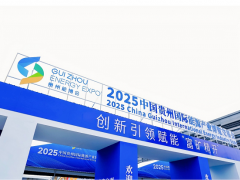今年上半年,全球范圍內勘探公司先后發現了26億桶油當量的油氣儲量
勘探和生產(E&P)行業正處于轉型時期,許多勘探公司都更加謹慎,并將戰略轉向更有利可圖、地質條件更好的地區
在尋找新資源的過程中,勘探公司優先考慮的是海上部分
據油價網2023年8月1日報道,常規油氣勘探支出正在反彈,今年預計將超過500億美元,為2019年以來的最高水平,但運營商仍在等待他們所希望的結果。挪威著名能源研究和商業情報公司雷斯塔能源公司(Rystad)的研究顯示,盡管今年上半年全球石油勘探投資不斷增加,但發現量卻降至新低。
雷斯塔能源估計顯示,在今年上半年,勘探公司先后發現了26億桶油當量的油氣儲量,比去年上半年發現的45億桶油當量減少了42%。與去年上半年的80個新發現相比,今年上半年只有55個新發現。這意味著今年的平均發現量為4700萬桶油當量,低于去年同期的5600萬桶油當量。
勘探和生產(E&P)行業正處于轉型時期,許多勘探公司都更加謹慎,并將戰略轉向更有利可圖、地質條件更好的地區。這種戰略轉變和幾口關鍵高潛力井的失敗導致了油氣產量的急劇下降。
在尋找新資源的過程中,勘探公司正在優先考慮海上部分,試圖利用未開發或前沿地區,通過高風險、高成本的海上開發來釋放新的油氣產量。今年迄今為止,海上油氣行業占勘探總支出的95%左右,但僅占發現量的三分之二左右。
雷斯塔能源上游研究副總裁Aatisha Mahajan表示:“上游公司正面臨一段不確定時期。他們渴望利用對化石燃料日益增長的需求,尋找更多的資源,但最近的結果卻乏善可陳。如果勘探作業在今年剩余時間內繼續取得令人印象深刻的成果,那么今年可能會因為錯誤的原因而突破歷史最高水平。”
資源在哪里?
圭亞那斯塔布魯克海上區塊產量的持續增長意味著這個加勒比海國家在發現量方面處于領先地位,今年發現量預計將達到6.03億桶油當量。土耳其以3.8億桶油當量的發現量位居第二,尼日利亞以2.96億桶油當量的發現量位居第三,納米比亞以2.87億桶油當量的發現量位居第四,隨著對發現量的深入了解,這些估值數據有可能增加。
海上發現相對均勻地分布在超深水、深水和大陸架上。然而,預計今年剩余時間的勘探和生產活動將增加,特別是在超深水市場,預計與去年相比新開鉆井數量將增加27%。
失敗的高影響力井
研究結果表明,今年全球預計將鉆取31口高影響力井,這些高影響力井是根據項目的重要性和生產潛力使用雷斯塔的分級系統指定的。到目前為止,今年上半年全球已經完成了13口高影響力井,6口高影響力井正在鉆進中,12口高影響力井仍在籌備中。在已完鉆的13口高影響力井中,只有4口高影響力井鉆遇到了油氣,成功率僅為31%。3口高影響力井的勘探結果尚未公布,其余6口高影響力井未發現任何油氣儲量。這些失敗的高影響力井嚴重影響發現的總資源量,并在很大程度上導致新發現量的減少。
石油巨頭繼續推動支出
六大石油巨頭——埃克森美孚公司、英國石油公司、殼牌公司、道達爾能源公司、埃尼公司和雪佛龍公司——繼續在全球油氣勘探領域發揮著關鍵作用,在勘探支出和全球常規探明儲量中占有顯著份額。這六大石油巨頭預計今年將在勘探上花費大約70億美元,比去年高出約10%。
全球油氣勘探活動很可能會在今年下半年獲得動力,計劃鉆取至關重要的勘探井。預測顯示,在未來幾個月,石油巨頭的勘探支出將占全球勘探總支出的14%左右,這凸顯了石油巨頭在勘探轉向海上領域,越來越關注前沿地區的環境中的相對重要性。這些未充分開發或未開發的地區擁有一些技術上最具前景卻尚未鉆探的遠景構造,近幾年來在這些地區的勘探中發揮著至關重要作用。
石油巨頭的支出和勘探開發活動特征使它們在全球市場上占有一席之地,但國家石油公司(NOC)擁有最廣泛的地下資源基礎。今年勘探支出的一半以上預計將來自國家石油公司和擁有國際投資組合的國家石油公司。
但今年可能還會有一些成功發現,因為只有30%的預期井已經完成,讓今年余下時間的勘探規模顯得突出。剩下的56口勘探井中,今年只有23口已開鉆或預計將開鉆,這意味著大約60%的勘探井可能會被開鉆或推遲到2024年開鉆。因此,即使在今年該行業被證明不夠成功,明年也可能出現反彈。
李峻 譯自 油價網
原文如下:
Oil Exploration Grows But Discovered Volumes Fall To New Lows
· Rystad: in the first half of 2023, explorers found 2.6 billion barrels of oil equivalent.
· The exploration and production (E&P) industry is in a transitionary period, with many companies exercising increased caution and shifting their strategies to target more profitable and geologically better-understood regions.
· In the hunt for new resources, exploration companies are prioritizing the offshore sector.
Spending on conventional oil and gas exploration is rebounding and expected to top $50 billion this year, the highest since 2019, but operators are still waiting for the results they had hoped for. Rystad Energy research shows that despite the rising investments, discovered volumes are falling to new lows.
Our estimates show that in the first half of 2023, explorers found 2.6 billion barrels of oil equivalent (boe), 42% lower than the first half of 2022 total of 4.5 billion boe. Fifty-five discoveries have been made, compared to 80 in the first six months of last year. This means discoveries in 2023 have averaged 47 million boe, lower than the 56 million boe per discovery for the same period in 2022.
The exploration and production (E&P) industry is in a transitionary period, with many companies exercising increased caution and shifting their strategies to target more profitable and geologically better-understood regions. This strategic shift and the failure of several critical high-potential wells are contributing to the precipitous drop.
In the hunt for new resources, exploration companies are prioritizing the offshore sector, trying to capitalize on underexplored or frontier areas to unlock new volumes through high-risk, higher-cost offshore developments. The offshore industry accounted for about 95% of exploration spending this year to date but only about two-thirds of discovered volumes.
“Upstream companies are facing a period of uncertainty. They are eager to capitalize on the increased demand for fossil fuels and find additional resources, but recent results have been lackluster. If exploration efforts continue to yield unimpressive results for the remainder of the year, 2023 could be a record-breaker for the wrong reasons,” says Aatisha Mahajan, vice president of upstream research at Rystad Energy.
Where are the resources?
The continued growth of Guyana’s Stabroek offshore block means the Caribbean country leads the way in discovered volumes, with 603 million boe in 2023. Turkey sits second with 380 million boe, Nigeria with 296 million boe and Namibia with 287 million boe, with the potential for these estimates to grow as we better understand the reserves.
Offshore discoveries are spread relatively evenly between ultra-deepwater, deepwater and shelf finds. However, we expect increased activity in the remainder of 2023, especially in the ultra-deepwater market, with projected growth of 27% versus 2022 in terms of spud wells.
Failed high-impact wells
Our research shows that 31 high-impact wells – designated using our tiering system based on the project’s significance and production potential – are expected to be drilled this year. So far, 13 have been completed, six are ongoing and 12 remain in the pipeline. only four of the 13 completed wells encountered hydrocarbons, a measly 31% success rate. The results of three wells are not yet disclosed, while the remaining six failed to find any reserves. These failures significantly impact the total discovered resources and greatly contribute to the falling discoveries.
Majors continue to drive spending
The six majors – ExxonMobil, BP, Shell, TotalEnergies, Eni and Chevron – continue to play a critical role in global exploration, with a prominent share of exploration spending and global conventional discovered volumes. The six companies are expected to spend about $7 billion this year on exploration, about 10% higher than in 2022.
Exploration activity will likely gain momentum in the second half of 2023, with crucial exploration wells planned to be drilled. Our forecasts show that the majors will contribute about 14% of total global exploration spending in the coming months, highlighting their relative significance in an environment where exploration has pivoted to the offshore sector, with an increased focus on frontier regions. These underexplored or virgin regions hold some of the most technically prospective yet-to-be-drilled prospects, with majors playing a vital role in recent years in exploring these areas.
The spending and activity profiles of the majors position them firmly in the market, but national oil companies (NOC) have the most extensive subsurface resource base at their collective disposal. More than half of the projected exploration spending in 2023 will come from NOCs and NOCs with international portfolios (INOC).
However, there may yet be some success to come this year, as only 30% of anticipated wells have been completed, highlighting the magnitude of the remaining activity. only 23 of the remaining 56 exploration wells are either drilled or are expected to be drilled this year, meaning about 60% are likely to be drilled or postponed until 2024. So, even if 2023 proves unsuccessful, a rebound could be on the cards next year.
免責聲明:本網轉載自其它媒體的文章及圖片,目的在于弘揚石化精神,傳遞更多石化信息,宣傳國家石化產業政策,展示國家石化產業形象,參與國際石化產業輿論競爭,提高國際石化產業話語權,并不代表本網贊同其觀點和對其真實性負責,在此我們謹向原作者和原媒體致以崇高敬意。如果您認為本站文章及圖片侵犯了您的版權,請與我們聯系,我們將第一時間刪除。







